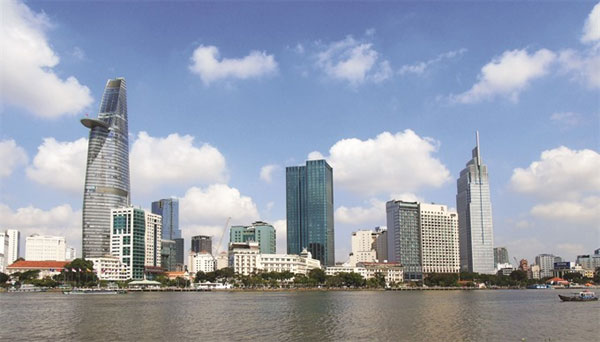VietNamNet Bridge – The Government has approved an adjusted construction master plan for the HCM City Zone to 2030 with a vision to 2050.

|
|
A view of HCM City’s downtown area. The Government has approved an adjusted construction master plan for the HCM City Zone which includes the city and seven provinces. – VNS Photo Anh Vu |
The plan targets developing the zone into a major Southeast Asian centre for culture, education and training, science and technology, and healthcare.
The HCM City Zone includes the administrative boundary of the city and neighbouring provinces of Ba Ria – Vung Tau, Binh Duong, Binh Phuoc, Tay Ninh, Long An, Dong Nai and Tien Giang, covering a total area of about 30,404 sq.km.
Under the plan, the zone would expand towards the east and northeast in a compact urban model.
HCM City, which is the country’s largest economic centre, is expected to be a nuclear urban area and connect and support other urban areas in the zone.
The plan calls for the city to be an international trading centre and a hub to link economic zones and key economic zones in the South, the Cuu Long (Mekong) Delta, the Tay Nguyen (Central Highlands) region and the south-central coastal region.
In developing the zone’s transport system, the plan focuses on completing expressways and belt road systems.
By 2030, new expressways, including Bien Hoa – Vung Tau, HCM City – Thu Dau Mot – Chon Thanh, HCM City – Moc Bai, and Dau Giay – Da Lat, will be built.
By that time, the city’s Belt Road No.3 is expected to be completed, while construction of the Belt Road No. 4 will begin.
New railway routes, including Trang Bom – Sai Gon Railway Station, Bien Hoa – Vung Tau, HCM City – My Tho – Can Tho, HCM City – Tay Ninh, will also be built.
By 2030 the zone is expected to have a population of 24-25 million, including 18-19 million people in urban areas and 6-7 million people in rural areas, with an urbanisation rate of 70-75 per cent.
Source: VNS
| related news |